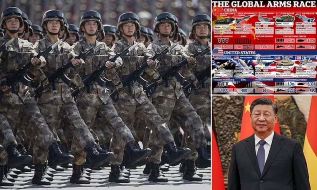Kementerian Pertanian Luncurkan Agro Map Info
Ministry of Agriculture Launches Agro Map Info
Reporter : Gusmiati Waris
Editor : Ismail Gani
Translator : Novita Cahyadi
 b.jpg)
Jakarta (B2B) - Kementerian Pertanian tahun depan akan meluncurkan Agro Map Info untuk mendukung pencapaian target Swasembada Pangan, dengan merujuk pada Kalender Tanam (Katam) melalui perluasan lingkup lahan kalender tanam terpadu.
Kepala Badan Penelitian dan Pengembangan (Litbang) Kementerian Pertanian, Haryono mengatakan Katam berisikan estimasi waktu luas tanam, wilayah rawan banjir, rekomondasi benih, rekomondasi pupuk, info tanam dan kalender tanam rawa.
"Konsep ini untuk menghadapi kemarau basah dan implikasinya. Ini penting ternyata agar konsep dan operasional harus nyambung," kata Haryono seraya menunjukkan tabel dari Estimasi Luas Tanam Padi, Jagung dan Kedelai Musim Tanam III 2013.
Haryono memaparkan Agro Map Info pada 2014 itu akan lebih dinamis. Pasalnya itu memperhitungkan pengaruh cuaca yang tidak akan menentu.
"Isinya lebih dinamis berdasarkan peta tematik," kata Haryono saat buka puasa bersama media di kantornya di Jakarta, Kamis (25/7).
Produksi Kedelai
Berkaitan dengan produktivitas kedelai yang hanya mencapai 600 ribu ton dari kebutuhan 1,5 juta ton per tahun, Haryono mengakui kendala utama pada harga yang tergolong rendah sehingga mengurangi motivasi petani kedelai untuk memperluas luas lahan untuk meningkatkan produksi.
Menurutnya, petani kedelai sempat kehilangan gairah lantaran harga kedelai lebih rendah daripada komoditas lain seperti bawang merah, bawang putih, jagung, dan produk holtikultura lainnya.
"Alhamdulillah sekarang sudah ada HPP Rp 7.000 sehingga para petani bergairah kembali walaupun agak lambat," ungkap Haryono.
Kendala lain, ungkap Haryono, keterbatasan lahan perkebunan kedelai yang saat ini hanya mencapai 500 ribu hektar. "Padahal dulu mencapai 1,2 juta hektar. Luas lahan menurun karena terokupasi oleh lahan jagung dan hortikultura lain yang dinilai petani lebih menguntungkan."
Kendala ketiga adalah benih yang tergolong rentan terhadap hama penyakit, karena secara umum menanam kedelai lebih sulit ketimbang menanam padi atau jagung.
Jakarta (B2B) - The Ministry of Agriculture will launch next year Agro Map Info to support the achievement of Food Self-Sufficiency, by referring to the Planting Calendar through the expansion of land area through an integrated planting calendar.
Head of Indonesian Agency for Agricultural Research Development the Ministry of Agriculture (IAARD) Haryono states planting calendar to review estimates planting time, planting area, flood-prone areas, the requirements of seed, fertilizer recommendations, info planting, and planting calendar marsh.
"The concept is to face the wet dry and implications. It is obviously important that the concept, and operations must be sustainable," Haryono said as he shows a Table of Estimates Acreage of Rice, Corn and Soybean Planting Season III 2013.
Haryono explained Agro Map Info in 2014 it will be more dynamic, because the estimates impact of erratic weather.
"It was more dynamic based thematic maps," Haryono said when iftar with the journalists at his office in Jakarta, Thursday (25/7).
Soybean Production
Related to the productivity of soybean, which only reached 600 thousand tons of needs 1.5 million tons per year, Haryono admitted major constraint on the price is lowthus reducing motivation soybean farmers to expand the land area to increase production.
According to him, the soybean farmers lose interest because soybean prices lower than other commodities such as onion, garlic, corn, and other horticultural products.
"Thank God now cost Rp 7,000 so farmers excited again though somewhat slowed down," Haryono said.
Another constraint, said Haryono, limitations soybean plantation area which currently reached only 500 thousand hectares. "It used to reach 1.2 million hectares. Area of ��land decreases due to land occupation corn and other horticulture, which assessed farmers more profitable."
The third obstacle is the seed that is vulnerable to pests and diseases, are generally more difficult to plant soybean, instead of planting rice, or corn.















